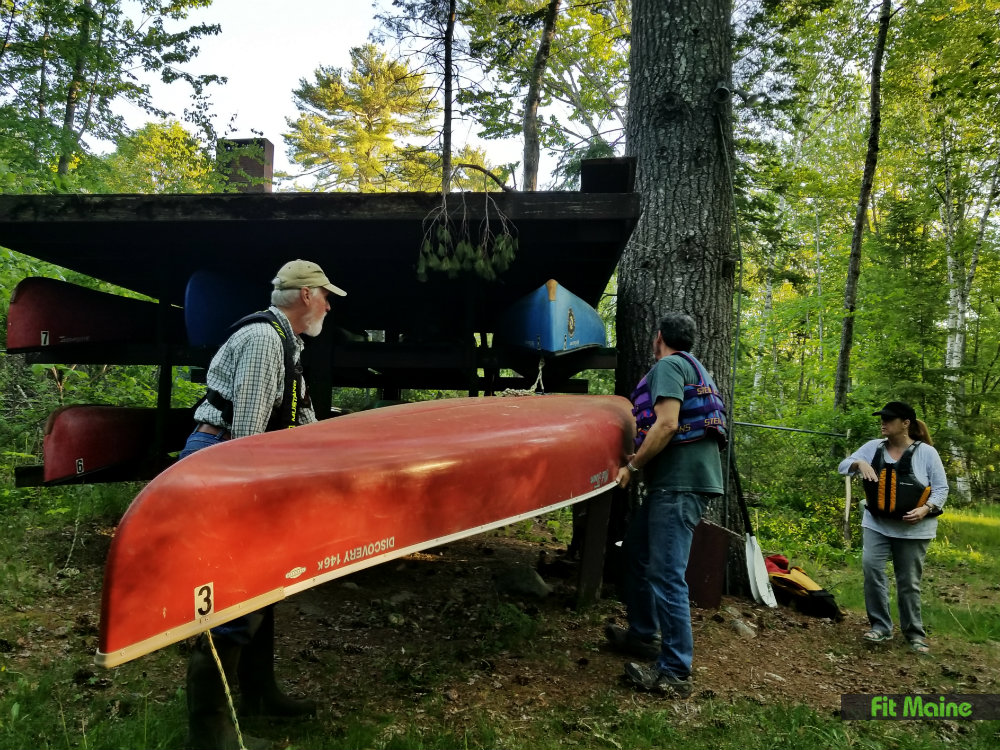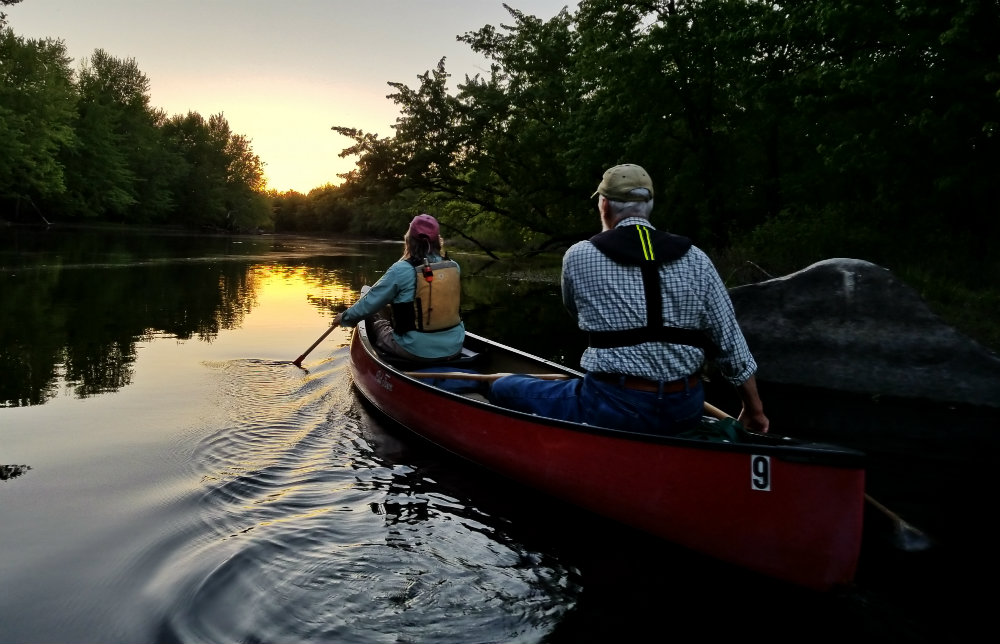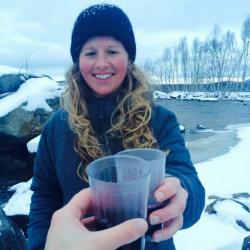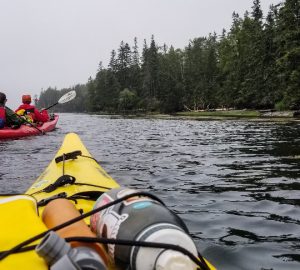Beavers are nocturnal. Turns out, so is the moon.
This happy coincidence means that, during a full moon paddle on Pushaw Stream, you’re surely going to spot some beavers. And – clouds depending – a big, fat, bright moon.
Hirundo Wildlife Refuge in Old Town leads guided canoe trips under the full moon throughout the summer – canoes and a beaver education included.

Founded in 1965 by Oliver Larouche, Hirundo Wildlife Refuge was expanded from his family’s three-acre camp into a 2,400-acre nature preserve. Oliver and his wife June developed a partnership with the University of Maine (the land was deeded to the university in 1983), and they funded research on fish, birds, and mammals, turning Hirundo a living laboratory.
Now, the refuge is open to the public for hiking and canoeing on Pushaw Stream. Access to the trails and the canoes is free, although donations are very much appreciated. Hirundo also offers guided excursions on the water throughout the spring and summer – including “Parent and Me Learn to Paddle,” “Kids in Nature,” and paddling skills clinics for adults.

But the full moon paddles are something extra special.
Canoes, paddles, and PFDs are included, as is a knowledgeable guide who’ll lead the group up Pushaw Stream and learn you all sorts of wildlife knowledge. This year, the cost is tiered, ranging from $8-$15. You can pay $8 to cover the cost of the program or choose to pay a few bucks more as an additional donation to Hirundo.

I had the pleasure of going on a full moon paddle last year, which was led by naturalist Gudrun Keszöcze, who is welcoming and kind and knows so much about the birds and beavers and trees and foliage that huddles along the banks of the stream.

Our small crew climbed into canoes as the sun was sleepily sinking toward the horizon. As luck would have it, it happened to be a warm spring evening with light winds and a perfectly clear sky.
Gudrun pointed out beaver lodges (Pushaw Stream is like a beaver city, with lodges everywhere) and the beavers’ presence is evident by downed trees or trunks with missing bark.

I learned that beavers are vegetarians and how they store tree branches for the winter by sticking them in the muddy river bottom. And how their lodges have three stories, with an underwater entrance at the bottom and dry space at the top, and how beavers let other critters like mice and muskrats share the space in the winter, so everyone stays warm.


We also spotted two blue herons (and by “we,” I mean someone else in the group spotted them and pointed them out, since I kinda stink at wildlife spotting) and a host of other birds, whose names I’m blanking on now.
We paddled at an easy-going pace, and sometimes just floated and talked about the landscape and the clay under the soil that makes it hard for water to drain and how high the river was in early spring and the kinds of trees that thrive in a watery environment like that.
I learned so many things – and noticed so many things I would certainly have missed on my own.

We ended up paddling all the way to Pushaw Dam. The full moon paddles don’t usually go that far, but the group agreed to extend the evening so we could try and see the alewives going through the fish ladder.

I do take credit for one wildlife spotting: a musk turtle I very nearly stepped on after we’d climbed onto shore to explore Pushaw Dam. I looked down to see a rock…that wasn’t a rock.
The alewives were hard to spot in the water on account of the setting sun, but it was cool to learn about how the fish are counted as they pass through PVC pipes set in the water. The previous year, around 700,000 passed through the dam to Pushaw Lake.

The sunset from the dam was pretty sweet, too.
We began our paddle back, keeping our eyes peeled for the rising moon. And soon we saw it glowing bright between the trees.

The stream was so calm and quiet and the moon lit the way, which made it all the more startling when a beaver slapped its tail close to my canoe and I nearly leapt from the boat in surprise.
A few more beavers slapped their tails along the way, and we spotted others (or at least, we could vaguely make out the wake made by beavers swimming from one side of the river to the next ahead of us, thanks to the light of the moon).


Eventually, we made it back to Hirundo Wildlife Refuge and pulled the canoes out of the water and set them back to rest on the racks.
Those boats will be there waiting for you, should you choose to go on a paddle under the light of the moon this summer. The beavers will be expecting you, too.
Full moon canoe
Hirundo Wildlife Refuge
1107 W Old Town Road, Old Town
$8-$15 includes paddle, PDF, canoe, and guide. Kids are $5.
See www.hirundomaine.org for all upcoming events.
Note: Hirundo has more than one entrance. Look for the sign indicating “Gate #3.” That’s where the groups meets. During my first visit there, my GPS led me to Gate #1, which is just down the road. The error was immediately clear, thanks to a closed gate there, but luckily a passing cyclist was kind enough to redirect me. So heads up!
FMI: www.facebook.com/HirundoWildlifeRefuge/ and www.hirundomaine.org





